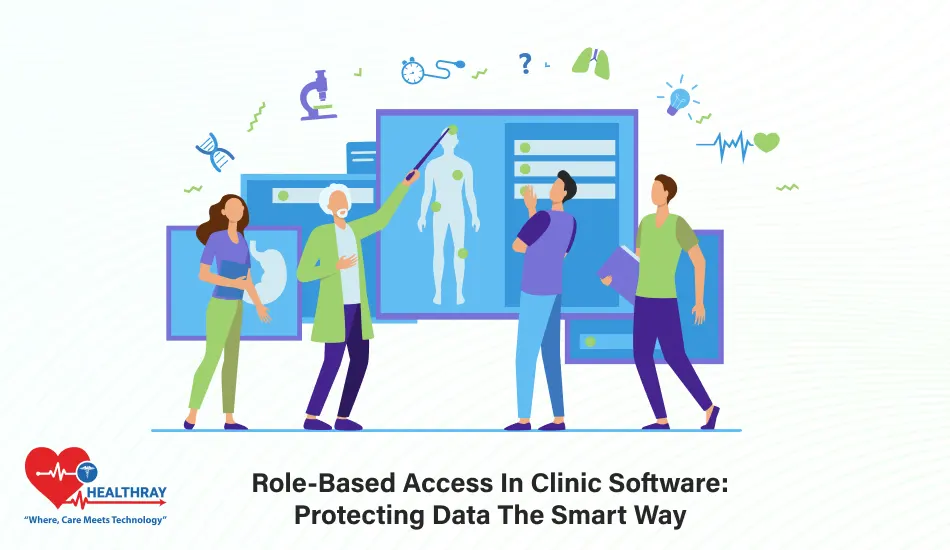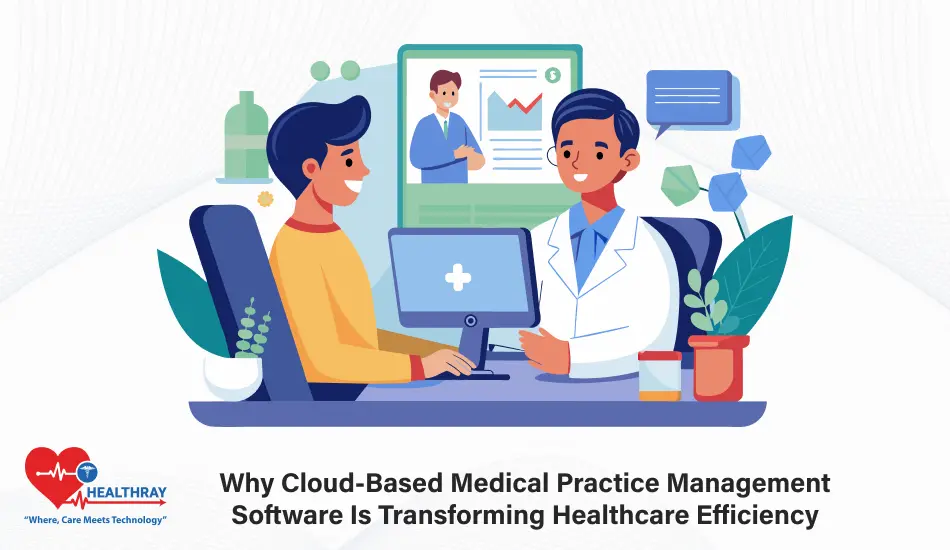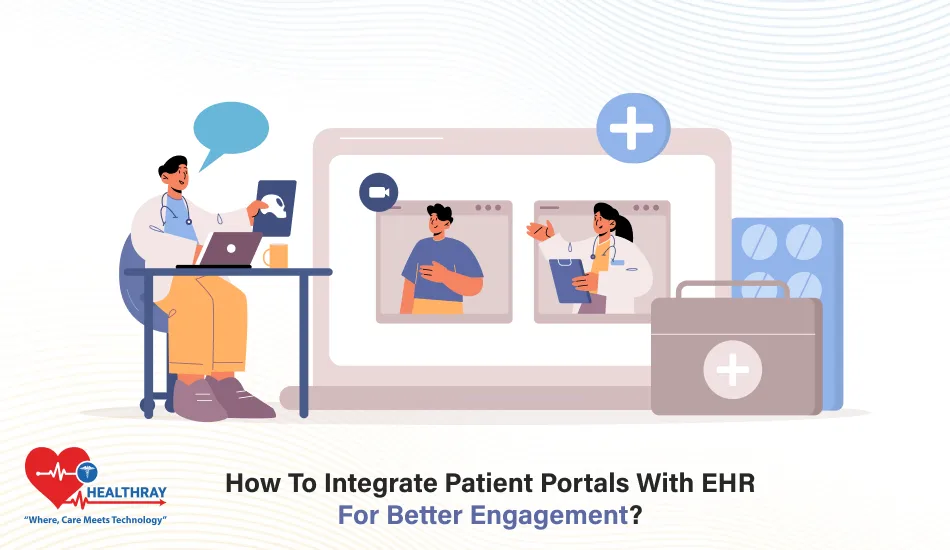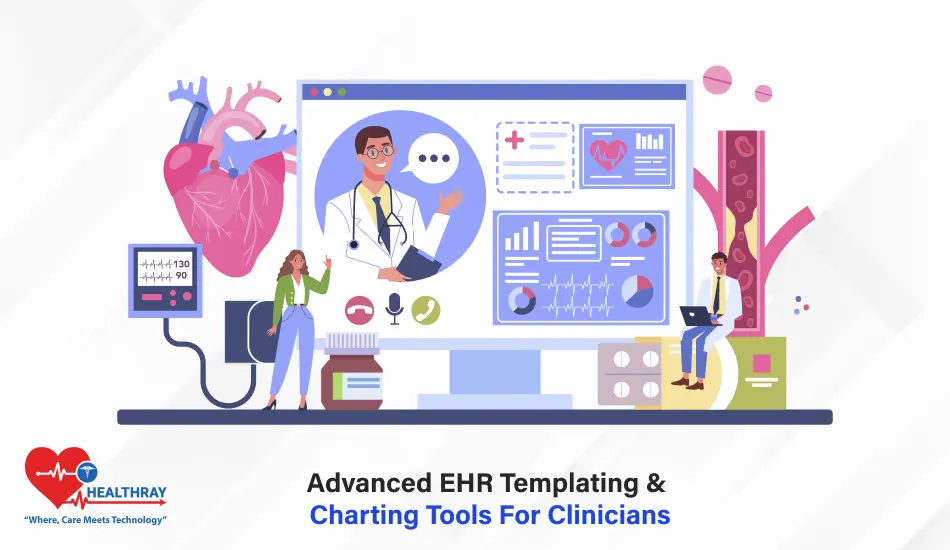Quick Summary
Clinics deal with sensitive patient details every day. Role-based access control keeps it safe. It gives each person access only to what they need. So no one checks the wrong files. This stops mistakes and builds trust. It also makes work quick and stress-free for everyone.
Introduction
You do not give the key to every visitor to your house. The same goes for your clinic data. It contains sensitive information, including patient details, prescriptions, billing data, and medical histories. You don’t want everyone to peek at these details.
More than this scary thought is that if the receptionist could see every patient’s HIV test results. Or if a billing clerk could change a doctor’s prescriptions.
That’s where role-based access control in clinic software comes in. It is a system that only opens the right door for the right people.
In this blog, we will explore how it helps protect patient data and is one of the best clinic management software to keep daily tasks smooth.
What Is Role-Based Access Control?
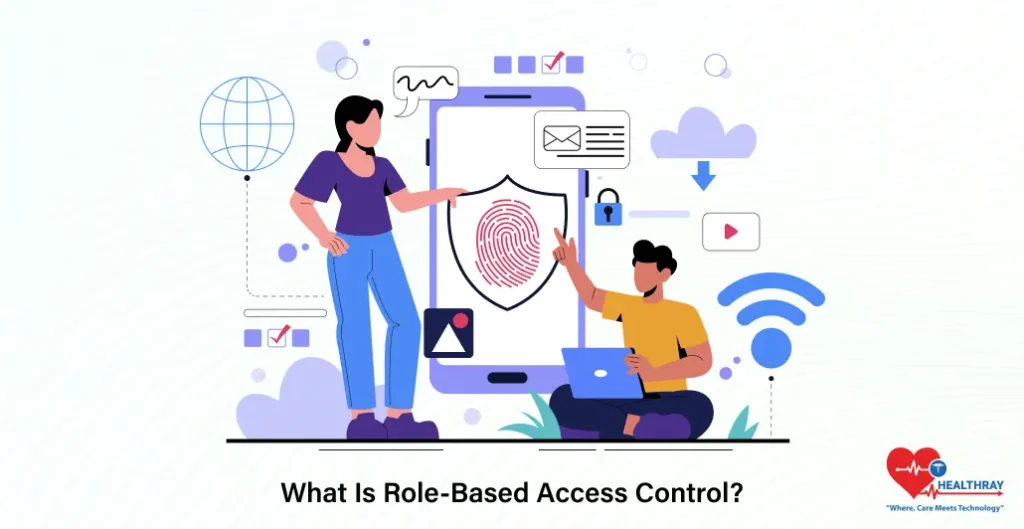
Role-based access control in clinic software means people get access based on their job roles. That’s it. This simply means each person will only get what they require. There will be nothing more than that or nothing less.
Everyone gets their own “role.” And each role comes with specific permissions.
Here’s how it works:
- Your receptionist logs in and sees appointment calendars
- Your doctor logs in and sees full patient records
- Your pharmacist logs in and sees prescriptions and medication history
- Your admin logs in and sees everything
This setup is better than the “old school” system, where everyone could see the complete information about each other. This software avoids the violation of the privacy of any patient. It keeps data safe and limits who can do what.
Why Every Clinic Needs Role-Based Access Control in Clinic Software
Healthcare deals with very personal data. This information is gold. And even hackers and criminals know it.
You would be surprised to know that most data breaches don’t come from hackers. But they come from the inside. Sometimes employees click the wrong link, and boom, your whole data is in the public eye.
Role-based access control in clinic software stops these problems before they start. Check these few reasons to know its importance:
Patient Privacy Protection
Your patients trust you with their secrets. They share their medical conditions, mental health struggles, and even test results. When too many people can open it, the chances of leaks go up.
Role-based access control in clinic software makes sure only certain roles can view or edit those parts that they are responsible for. For example, the billing team can view the account details but not the medical histories. As they don’t need it.
By dividing access smartly, you have good clinic management. It boosts the patient’s trust in your clinic.
Legal Compliance
The laws for healthcare are getting stricter day by day. If you do not properly handle any of the important documents like consent forms, medical reports, or insurance details, you may get into legal trouble.
Role-based access control in clinic software helps you to follow compliance rules without stress. So everything gets tracked. Even if someone views or edits data, the system logs it.
With this software, legal compliance is easy to manage. It is a smart system that keeps everything transparent and easy to manage.
Preventing Internal Data Breaches
Not every data threat comes from outside hackers. Sometimes, even the workplace has risks. Curiosity or misuse can lead to information leaking within the clinic. With role-based access control, the sensitive data is not open to all. So not everyone can sneak into private information.
Only assigned job roles get the keys. This means if someone tries to view things where they should not, then the system will automatically block the action.
It keeps the internal structure clean and disciplined. So you have a safe and better workflow.
Reducing Human Errors
It is normal for humans to make mistakes. Even the best staff can make errors. Maybe someone enters data in the wrong file or sends a report to the wrong patient. But this minor issue can make a big fuss, especially in healthcare.
Role-based access control in clinic software helps to reduce these errors by setting clear limits on what each person can do.
With this system, your team gets limited access as per their roles. So your screens only show relevant options, and errors drop instantly.
Building Patient Trust
Patients share their most personal details with clinics. They rely on those clinics that feel honest and responsible. Trust forms naturally when they know their data is protected.
This system lets patients know that your clinic respects their personal boundaries. It proves that health data stays confidential.
It is especially beneficial for multi-location clinic management, where different branches have different sets of data. It builds trust among patients that no matter which locations they visit, their privacy will be top-notch.
How Clinics With Role-Based Access Differ from Those Without
You would have understood till here what role-based access control in clinic software is and how it is a must-have for your clinic. Now you would think how it is different from those who don’t have. So let’s do a quick comparison between two of them. You can check this table to understand the difference:
| Feature | With Role-Based Access | Without Role-Based Access |
| Data Security | Only the right people see data | Anyone can open or change files |
| Error Rate | Fewer mistakes happen | More chance of errors |
| Compliance | Easy to track who did what | Hard to show records |
| Patient trust | Patients feel safe and respected | Patients worry about privacy |
| Workflow | Work is smooth and organized | Tasks overlap and cause confusion |
| Speed | Tasks finish faster | Work slows down due to confusion |
| Accountability | Every action is tracked clearly | No record of who changed what |
We can conclude that the role-based access controls work better. With this, everyone knows what they should do. So no one pokes their nose into others’ tasks.
How Role-Based Access Control in Clinic Software Actually Works
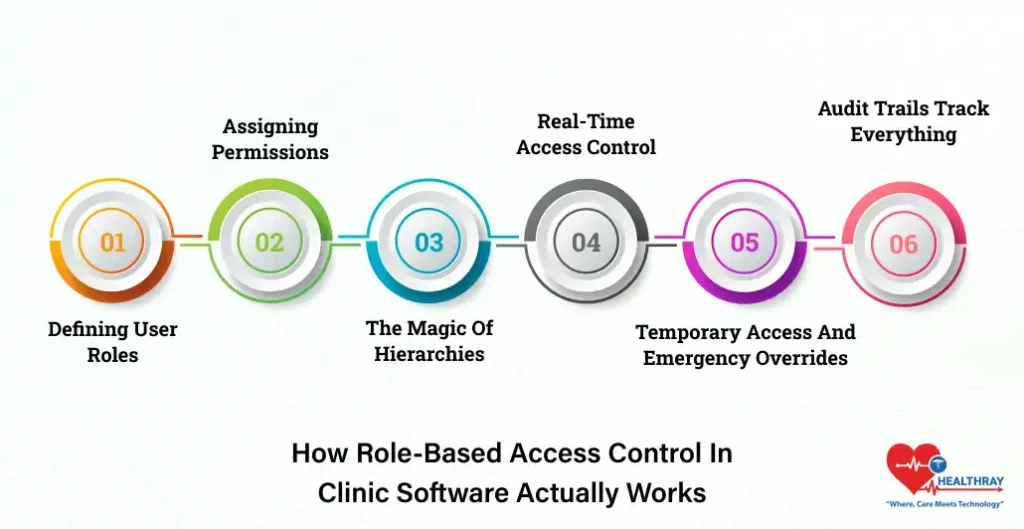
Let’s be rational and understand how role-based access control actually functions in your day-to-day operations. Here is the step-by-step breakdown:
Defining User Roles
Each clinic has different staff performing different duties. When your team is assigned access pertaining to their roles, there is less confusion. Role-based access control in clinic software prioritizes your team’s accountability.
Everyone knows their job, and no one steps into another’s area by mistake. So no one from the other department can access others’ files.
Here’s what it does for your clinic management:
- Each staff member gets a specific role.
- Roles decide what data they can see or change.
- Keeps access clean and sorted.
- Reduces mix-ups and confusion.
Assigning Permissions
Once you have assigned the roles, then you can move to define permissions. It dictates what each role can perform within the system. All users don’t have the same rights to view, edit, delete, or share information. You only give access to those who are authorized.
You can take this example like the doctors can only edit prescriptions but they are not any insurance claims. These measures make sure that the entire staff can perform their duties within their limits. This overall helps your team move faster.
Why permissions matter:
- Define what each role can do.
- Stop unwanted edits or deletions.
- Keep sensitive data locked tight.
- Build a smooth, safe workflow.
The Magic of Hierarchies
Certain roles need more flexibility as per their authority. For example, senior doctors can access more information compared to interns. Admins can have a view of nearly all information.
The system functions in a structured manner for all staff without the need for permission systems. Higher staff have more responsibilities. So they get more access. Whereas the lower staff may perform simple and routine tasks. This level of order is what makes role-based access control so intelligent in clinic software.
Why hierarchies make sense:
- Build a clear structure of access levels.
- Give senior staff more control.
- Keep daily work quick and simple.
- Reduce dependency on others.
Real-Time Access Control
Access control should change as per the environment. This means you can change the access control depending on the situation. When users log out of the system, resign, or move to a different section of the organization, control access is adjusted within seconds.
Role-based access control in clinic software keeps everything dynamic. One click and permissions change immediately. This keeps everything live, safe, and under control. This system does all the guarding in the background.
Here’s why real-time control helps:
- Works instantly and automatically.
- Blocks access outside defined roles.
- Keeps data protected all the time.
- No need for manual supervision.
Step towards digital era with our healthcare solution
Revamp your hospital facilities and embrace change for better healthcare management. Ease in managing and organizing large medical datasets leads to effective analysis. Seize the opportunity now!
Temporary Access and Emergency Overrides
Emergencies can happen anytime. A doctor may need quick access to a file they usually can’t see. Or a new nurse might cover for someone sick. So this system gives you that option.
With this system, temporary access can unlock the required data for short periods. It is flexible but safe. It keeps care seamless without risking privacy. So any role can be granted access for a certain period if it is an urgency.
Here’s why temporary access matters:
- Allows short-term access for emergencies.
- Keeps data safe even during urgent cases.
- Grants flexibility without losing control.
- Automatically removes temporary access later.
Audit Trails Track Everything
Every action that you take is tracked through this system. This means role-based access control in clinic software tracks every login attempt. If you make any change or even view, the system notes it. This system tells who viewed or edited what and when. It even includes the exact time of the action.
These audit trails are like CCTV for your data. With this, you can easily find errors or if there is any misuse. So if anything goes wrong, you can just trace it back in seconds. As a result, your clinic is protected from inside and outside threats.
What audit trails do for you:
- Track every login and activity.
- Show who did what and when.
- Support compliance and transparency.
- Make problem-solving faster.
These features work for every clinic. It doesn’t matter whether it is big or small. This keeps data safe and tasks simple. And yes, this also applies to a clinic management system in India, where data protection rules continue to grow stronger every day.
Conclusion
Trust in healthcare is as important as the treatment. It is also in the safekeeping of personal information. This starts with the measures you take. Role-based access control in clinic software lets you limit data use and keep information confidential. This is core to the protective measures concerning patient data, akin to the ideal situation of having the right rules with the right people.
Understanding each person’s roles and limits makes your teamwork seamless. It also keeps the risk of data leaks at zero. Modern clinics and practices with safe records are building patient trust.
If you want to be part of this transformation, Healthray is a perfect fit for you. It offers a safe system for your clinic. No more stress of any private details leaking.
